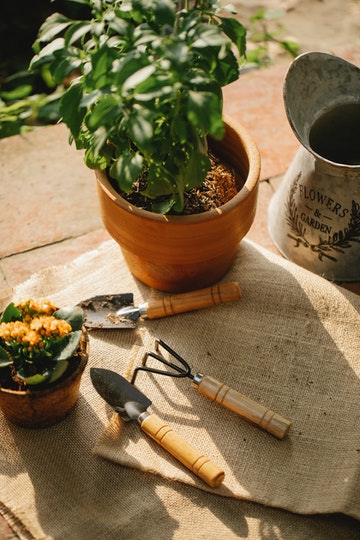Instead of throwing leaves into the trash can, it is better to keep leaves directly into the ground. The high yield of crops depends entirely on fertilizer. While the leaves mixed into the ground can keep the soil moisture improve the water storage capacity of the soil, and increase the humus.
What Leaves Contain?
Leaves are rich in nutrients and contain twice as many minerals as animal manure. The tree is like a huge nutrient extractor. It uses its powerful root system to extract minerals, nitrogen, phosphorus, and potassium from the ground. It offers nutrients to the leaves, while leaves produce nutrients through photosynthesis. So trees’ nutrition mostly is in leaves.
Leaves that have fallen off into the ground are finally beneficial to their roots, which are drought resistant and heat preservation.
Trees and leaves are an integral part of the natural biological cycle and the reincarnation of life.
Before the arrival of the severe winter, the tree shakes off the leaves which around the roots to keep warm and prevent frostbite to the roots. In severe drought years, trees lost their leaves one after another, and leaves fall around the roots, covering the topsoil, reducing water evaporation, and helping trees survive the severe drought.
Because hummus is loose and porous, its adhesive force and cohesive force are smaller than clay and larger than sandy soil, so it can not only improve the looseness and aeration of cohesive soil. But it can also change the loose state of sandy soil. Prevent soil compaction, favor root development, and improve soil thermal conditions. The hummus is loose and porous and has strong water absorption and storage capacity, which can improve the water storage and moisture retention capacity of the soil by more than 50%. The acidic humus formed by the leaves is particularly beneficial for the growth of rhododendrons and many species of flowers.
The leaves are also a good insulating material, which helps to raise the surface temperature during the bitterly cold season and lowers the surface temperature when the heat is unbearable. This way can reduce the topsoil loss, increase soil activity and give soil vitality.
Organic Garden, Take Full Advantage of the Fertilizer from Leaves
Fallen leaves are the gift of autumn, the gift of nature! Those leaves, such as well-made fertilizers, are mostly thrown away as garbage. According to statistics, the leaves and grass in the yard account for 60%, and most of them are used for filling pits.
If you want to use an economical and natural method to create a natural garden, an organic garden. Let the nature take its course and digest and utilize leaves and branches in situ. To build flower beds and flower ponds need a lot of good soil, the most economical, quick, and convenient to use leaves, which are also natural fertilizers. This method is analogous to the formation mechanism of the fertile soil at the bottom of the forest in nature: layered bedding leaves, forming a dark fertile soil.
Mixing some cut grass and livestock manure in the leaves can accelerate the decomposition. Adding kitchen leftovers can attract earthworms and also accelerate the decomposition of leaves. Usually, compost takes a long time to decompose and mature. If earthworms participate, the decomposition rate will be greatly improved, and it will take two months.
How to Improve Soil Using Leaves
1. Collecting leaves. In autumn, after leaves have fallen off, rake leaves in piles and pour leaves into garden bags with a leaf scoop.
2. Dig a hole for soil and bury those leaves.
3. Incorporated into kitchen waste. This is to attract earthworms, when the leaves are mixed into the skin of the kitchen vegetables, there will be more earthworms, which greatly improves the decomposition rate.
4. Bury leaves and protect flowers. Fill in the leaves and step on them firmly, then cover with a thin tree branch, pressing the leaves. This is to protect the flowers over winter, after converting my front yard from lawn to garden, I planted 40 fuchsias and 30 roses. After the fuchsia has overwintered, it will grow quickly in spring, grow strong, and bloom continuously. It’s already November, and the flowers are blooming.
5. Cover soil and wind protection: a thin layer is enough. Cover the leaves to prevent them from being blown away by the wind.
6. Next spring, cover with a layer of mulch to keep the ground clean.
Note: some leaves are poisonous, like cherries, wild cherries, and contain cyanide, so don’t mix them into vegetable fields. Walnut leaves and eucalyptus leaves contain substances that will inhibit the growth of other plants and can only be spread in open spaces to control weeds.



